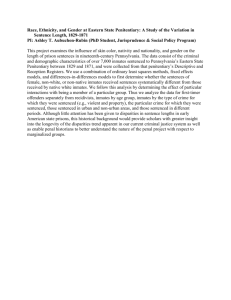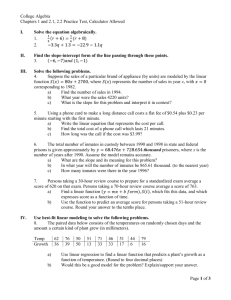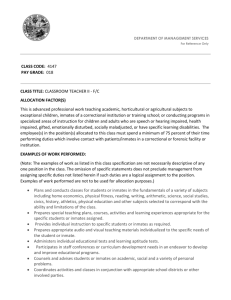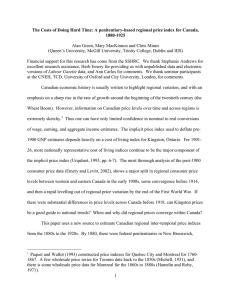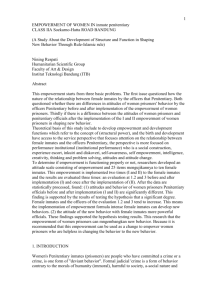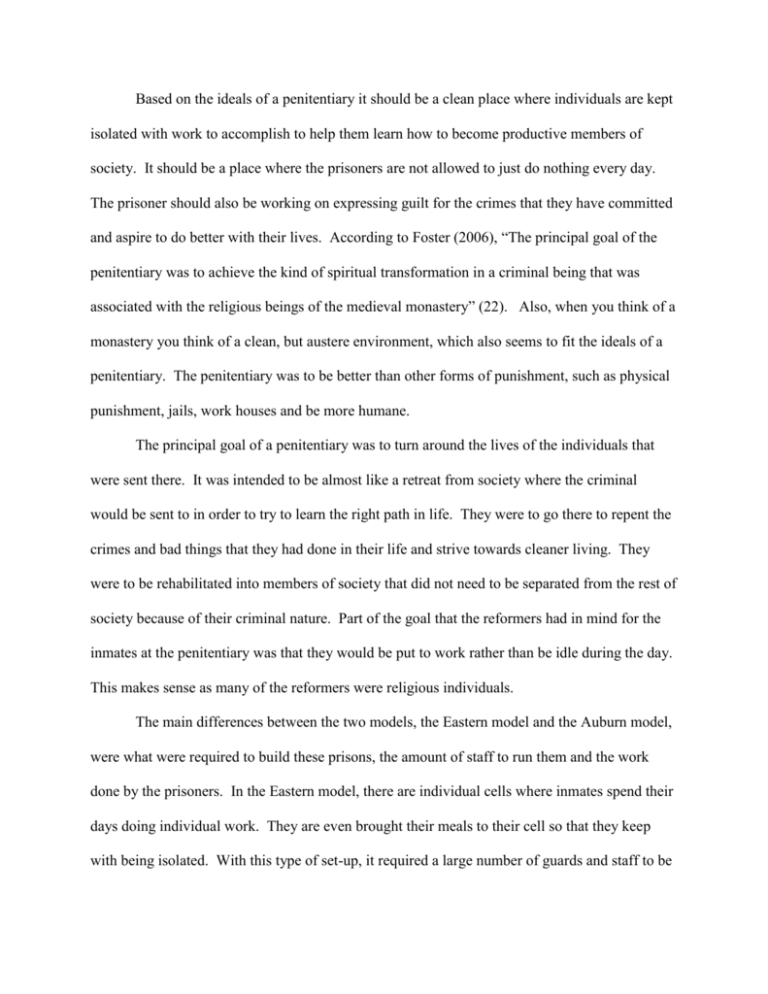
Based on the ideals of a penitentiary it should be a clean place where individuals are kept
isolated with work to accomplish to help them learn how to become productive members of
society. It should be a place where the prisoners are not allowed to just do nothing every day.
The prisoner should also be working on expressing guilt for the crimes that they have committed
and aspire to do better with their lives. According to Foster (2006), “The principal goal of the
penitentiary was to achieve the kind of spiritual transformation in a criminal being that was
associated with the religious beings of the medieval monastery” (22). Also, when you think of a
monastery you think of a clean, but austere environment, which also seems to fit the ideals of a
penitentiary. The penitentiary was to be better than other forms of punishment, such as physical
punishment, jails, work houses and be more humane.
The principal goal of a penitentiary was to turn around the lives of the individuals that
were sent there. It was intended to be almost like a retreat from society where the criminal
would be sent to in order to try to learn the right path in life. They were to go there to repent the
crimes and bad things that they had done in their life and strive towards cleaner living. They
were to be rehabilitated into members of society that did not need to be separated from the rest of
society because of their criminal nature. Part of the goal that the reformers had in mind for the
inmates at the penitentiary was that they would be put to work rather than be idle during the day.
This makes sense as many of the reformers were religious individuals.
The main differences between the two models, the Eastern model and the Auburn model,
were what were required to build these prisons, the amount of staff to run them and the work
done by the prisoners. In the Eastern model, there are individual cells where inmates spend their
days doing individual work. They are even brought their meals to their cell so that they keep
with being isolated. With this type of set-up, it required a large number of guards and staff to be
able to keep it running. Whereas, the Auburn model, is more of what we think of today with
prisons in that the inmates are not kept in isolation and work in groups. They did not require as
much staff because they were able to supervise and feed the inmates in groups.
The benefit of the Eastern model was that it fit more closely with what the ideal of a
penitentiary was, in how the inmates were housed, fed, guarded and given work. The drawbacks
of the Eastern model were that it was expensive to keep up with staff, the inmates did not
produce the same type of work as those in the Auburn model, and psychological effects of being
in solitary confinement were considered to be cruel and unusual punishment. With the Auburn
model, it had the benefits of being cheaper to maintain and run. Inmates were able to work in
groups in producing more cost effective goods to be sold. The drawbacks of the Eastern model
were that these individuals were in groups which could be disorderly and hard to deal with in
case of problems. It also had the drawback of having extremely small cells, and sickness spread
easily among the prisoners since they were able to congregate while working.
The model that was considered to be the winning model was the Auburn model when it
came to the ease of use and other benefits, including cost. The Eastern model was considered to
be closer to the ideal of a penitentiary, but had a lot of drawbacks in that caring for the men
individually in cells was expensive and time-consuming. According to Foster (2006), “The
Auburn model was cheaper to build and operate, requiring fewer guards to service and control
the prisoners, and used the space within the walls more intensively. Most important, group labor
made it economically more productive” (26). Really it all comes down to the main factors of
money and need. They needed to build them cheaply, make money from what was produced by
the inmates and have enough space to deal with all of the inmates being incarcerated.
References
Foster, B. (2006). Corrections: the fundamentals. Toronto: Pearson Prentice Hall.


